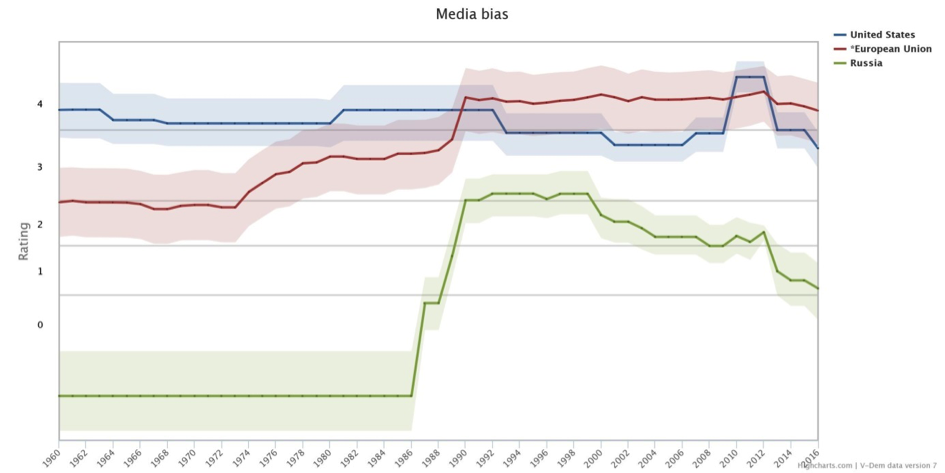Media corruption in US, EU, Russia
By: V-Dem Staff
Oct 25, 2017
Fake news! In 2016, the concept of fake news gained salience in connection with the U.S. presidential election. Although not a new concept, as Merriam-Webster traces its origin back to the late 19th century, it has come to depict information that is heavily biased or flat out false. Specifically, it has been used to discredit certain news organizations as not being impartial, or heavily favoring one political actor over another. Increasingly seen as a threat to democracy, several governments have taken it up on themselves to address the issue, launching inquiries into the subject.
This week’s graph looks at media bias in the United States, European Union, and Russia since 1960. The scale run from zero to four, where four indicates impartial coverage of newsworthy parties and candidates, and zero indicates no coverage of opposition parties or candidates. Although the United States and the European Union exhibits high values of media impartiality, it is noteworthy that both countries and the European Union exhibit a negative trend since 2012. However, the negative trend is not yet statistically significant, and future V-Dem data will contribute to see if the trend continues. Russia made significant improvements after the dissolution of the Soviet Union; however, in more recent years the development took the opposite direction.
To find out more about media bias in the world, use our online analysis tools at v-dem.net. Here you can also find additional indicator relating to the media, such as media corruption and media self-censorship.


